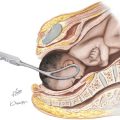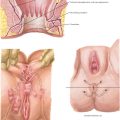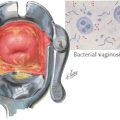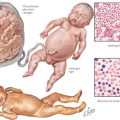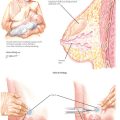Chapter 62 Urinary Incontinence: Stress
INTRODUCTION
ETIOLOGY AND PATHOGENESIS
DIAGNOSTIC APPROACH
Workup and Evaluation
MANAGEMENT AND THERAPY
Nonpharmacologic
Drug(s) of Choice
FOLLOW-UP
MISCELLANEOUS
Carey MP, Goh JT, Rosamilia A, et al. Laparoscopic versus open Burch colposuspension: a randomised controlled trial. BJOG. 2006;113:999.
Kinn AC, Lindskog M. Estrogens and phenylpropanolamine in combination for stress urinary incontinence in postmenopausal women. Urology. 1988;32:273.
Kitchener HC, Dunn G, Lawton V, et alCOLPO Study Group. Laparoscopic versus open colposuspension—Results of a prospective randomized controlled trial. BJOG. 2006;113:1007.
Laurikainen E, Valpas A, Kivela A, et al. Retropubic compared with transobturator tape placement in treatment of urinary incontinence: a randomized controlled trial. Obstet Gynecol. 2007;109:4.
Meschia M, Pifarotti P, Bernasconi F, et al. Tension-free vaginal tape (TVT) and intravaginal slingplasty (IVS) for stress urinary incontinence: a multicenter randomized trial. Am J Obstet Gynecol. 2006;195:1338. Epub 2006 Jun 12
Oelke M, Roovers JP, Michel MC. Safety and tolerability of duloxetine in women with stress urinary incontinence. BJOG. 2006;113:22.
Albo ME, Richter HE, Brubaker L, et alUrinary Incontinence Treatment Network. Burch colposuspension versus fascial sling to reduce urinary stress incontinence. N Engl J Med. 2007;356:2143. Epub 2007 May 21
Atherton MJ, Stanton SL. The tension-free vaginal tape reviewed: an evidence-based review from inception to current status. BJOG. 2005;112:534.
Brubaker L, Cundiff GW, Fine P, et alPelvic Floor Disorders Network. Abdominal sacrocolpopexy with Burch colposuspension to reduce urinary stress incontinence. N Engl J Med. 2006;354:1557.
Dean N, Herbison P, Ellis G, Wilson D. Laparoscopic colposuspension and tension-free vaginal tape: a systematic review. BJOG. 2006;113:1345.
Federkiw DM, Sand PK, Retzky SS, Johnson DC. The cotton swab test. Receiver-operating characteristic curves. J Reprod Med. 1995;40:42.
Freeman RM. The role of pelvic floor muscle training in urinary incontinence. BJOG. 2004;111:37.
Stanton SL. Mid-urethral tapes: which? Review of available commercial mid-urethral tapes for the correction of stress incontinence. BJOG. 2004;111:41.
Abrams P, Blaivas JG, Stanton SL, Andersen JT. The standardization of terminology of lower urinary tract function produced by the International Continence Society Committee on Standardization of Terminology. Scand J Urol Nephrol. 1988;114:5.
American College of Obstetricians and Gynecologists. Genitourinary tract changes. Obstet Gynecol. 2004;104:56S.
American College of Obstetricians and Gynecologists. Urinary incontinence in women. Obstet Gynecol. 2005;105:15335.
American College of Obstetricians and Gynecologists. Pelvic organ prolapse. ACOG Practice Bulletin 79. Obstet Gynecol. 2007;109:461.
Anders K. Devices for continence and prolapse. BJOG. 2004;111:61.
Bombieri L. Is there a role for colposuspension? BJOG. 2004;111:46.
Consensus Conference. Urinary incontinence in adults. JAMA. 1989;261:2685.
Drutz H. Duloxetine in women awaiting surgery. BJOG. 2006;113:17.
Freeman RM. Initial management of stress urinary incontinence: pelvic floor muscle training and duloxetine. BJOG. 2006;113:10.
Lentz GM. Urogynecology. In: Katz VL, Lentz GM, Lobo RA, Gershenson DM, editors. Comprehensive Gynecology. 5th ed. Philadelphia: Mosby/Elsevier; 2007:551.
Mariappan P, Ballantyne Z, N’Dow JM, Alhasso AA. Serotonin and noradrenaline reuptake inhibitors (SNRI) for stress urinary incontinence in adults. Cochrane Database Syst Rev. 2005. CD004742.
Norton P, Brubaker L. Urinary incontinence in women. Lancet. 2006;367:57.
Norton PA. Urinary incontinence. Clin Obstet Gynecol. 1990;33:293.
Nygaard IE, Heit M. Stress urinary incontinence. Obstet Gynecol. 2004;104:607.
Ramsay IN. The treatment of stress incontinence—Is there a role for laparoscopy? BJOG. 2004;111:49.
Smith PP, McCrery RJ, Appell RA. Current trends in the evaluation and management of female urinary incontinence. CMAJ. 2006;175:1233.
Sutherland SE, Goldman HB. Treatment options for female urinary incontinence. Med Clin North Am. 2004;88:345.
Urinary Incontinence Guideline Panel. Urinary incontinence in adults: Clinical Practice Guidelines. Rockville, MD: Agency for Health Care Policy and Research, U.S. Dept of Health and Human Services, 1992. AHCPR publication 92–0038.
Videla FLG, Wall LL. Diagnosing stress incontinence without multichannel urodynamic studies. Obstet Gynecol. 1998;91:965.
Wagg A. Urinary incontinence—Older people: where are we now? BJOG. 2004;111:15.



